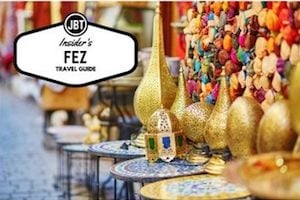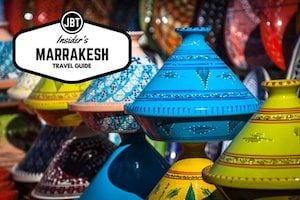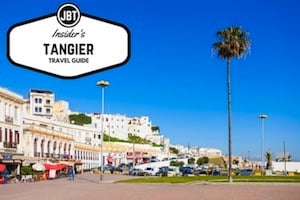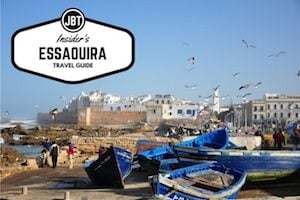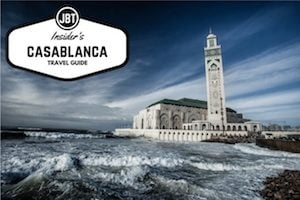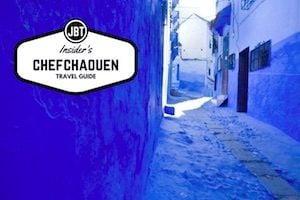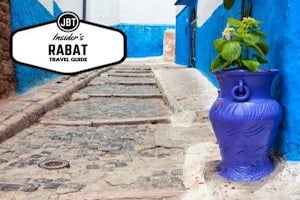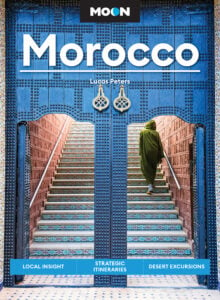
The old Medina of Tetouan is a place where people live and work — you won’t find many souvenir shops here. But if you want to experience life in a Moroccan medina with few tourists where you can explore without being bombarded by “come have a look!” then Tetouan is well worth a visit, either as a long day trip or an overnight. With just 24 hours you can get a good sense of Tetouan’s flavor.
Tetouan is often maligned in guidebooks as a city with nothing to see and do, and that’s just fine by many locals, who don’t want too much tourism. But if you want to see the “real Morocco,” it’s well worth a short visit for experiences found nowhere else!
24 Hours in Tetouan – A Short History
Tetouan, about a 90-minute drive from Tangier, is 7 miles from the eastern coast of Morocco’s northern peninsula, close enough to see the Mediterranean from any high place. The medina is a UNESCO World Heritage Site due to its history as a crossroads between Andalusian and Moroccan/Muslim civilizations. It is extremely well-preserved and relatively untouched by modern forces, such as tourism, which is why it’s such a hidden gem for travelers coming to Morocco.
During the Spanish occupation of northern Morocco, Tetouan was the capital of the protectorate era, much like Rabat became the capital under the French protectorate further south. Like many Moroccan cities, there is the old medina, and there is the newer area—in this case the Spanish-built area is called the Ensanche—the “extension”—rather the more-common French Ville Nouvelle, or “New town.”
24 Hours in Tetouan – The Old Medina
The morning is the best time to explore the medina, when everyone is out doing their shopping. The Royal Palace and its enormous, cordoned-off plaza called Place Hassan II, is surrounded by the medina on 3 sides. The streets northwest of the palace are a cacophony of vendors selling hardware, produce, fish, and chickens — the latter are live until slaughtered to order. The portion of the medina southeast of the palace is cleaner and quieter, with the merchandise consisting more of clothing, party supplies, furniture, and housewares.

Mike’s Tip: Navigating Tetouan’s Old Medina
Look down at the cobblestoned streets and in their centerlines you will see patterns of longer stones, either 1, 2 or 3 courses wide. 3 wide means it’s a main street which leads to one of the medina’s 7 gates; 2 means that the street will take you to one of the main streets; and a single line means that the street is residential, a dead end. Now have fun getting lost, knowing that you can easily find your way out!
24 Hours in Tetouan – The Archeological Museum
Also northwest of the palace, just outside the medina, is the Archeological Museum, admission 10Dh. It’s small and you can go through it in 30-60 minutes, but it’s worth seeing if you aren’t going to have time to visit Volubilis, which also has an archeological museum. Outside the building there are mosaics from Lixus and urns from Tamuda, a pre-Roman city where Tetouan now stands, and you’re free to take photographs. Inside, where no photos are allowed, artifacts and signage tell the history of the area from its pre-Roman past until the Spanish diaspora. Upstairs, there are several mosaics which were moved from Volubilis, in amazing condition since they’re no longer out in the elements.
Note that the signage is all in French, Spanish, and Arabic. Do some research on the region’s history ahead of time and you’ll get a lot more out of your visit. Hours are 10AM -5:30PM, Mon-Sat.

From the northwest side of the palace, spend an hour wandering up to the kasbah and back. You can’t go inside the kasbah due to its poor condition, but the old walls all around it and the octagonal tower on the east side are interesting. As you ascend, you’ll notice that the exterior colors change from white and green to white and blue. You can have a view over the cemeteries where small flocks of sheep and goats graze, all the way to the Mediterranean.
24 Hours in Tetouan – Where to Eat
When you’re ready for lunch, Riad Blanco is the place to go—hands down, the best restaurant in Tetouan. The food is Moroccan in origin but with high-end European styling and presentation, and it’s not expensive. It’s also probably the best riad (a Moroccan inn) in town if you’re spending the night, run by a woman who understands the expectations of western tourists. It’s just off the palace plaza in a tunnel with 2 lines of stones- the other end drops you into the medina.
24 Hours in Tetouan – Art Centers
Tetouan happens to be one of the most important art centers in Morocco, though it doesn’t advertise it. For 10 Dh you can visit Ecole des arts et métier de Tetouan, across from the gate called Bab Okla, where young people study traditional crafts such as mosaic, woodcrafts, embroidery and plaster work. This is the only arts program in Morocco that offers a diploma. But if you want to really understand what you are looking at, contact Green Olive Arts ahead of time and allow 3 hours for an excellent guided tour of the school, followed by visits to the workshops of some practicing craftsmen. The tour is led by American expat artists who can speak Arabic with students and teachers as well as explain the crafts to you in detail.
After lunch, head toward the river, out the gate called Bab Rmouz to the Tetouan Center of Modern Art. It’s free and the museum will show you a sampling of painting from the 1940s through this decade along with some sculpture and mixed media pieces. Some of the work is traditional realism and some veers into classic modern art territory or social activism. Allow 60-90 minutes and hours are 10AM-6PM, Mon-Sat. Directly across the street from that is Tetouan’s Ensemble Artisanal, a cooperative where you can see craftsmen doing their work and buy it at government-controlled prices.
24 Hours in Tetouan – A Great View
Get a taxi and for 20Dh, head across the river and up the mountain called Jebel Ghoureg, to an area only the locals know. Tell the driver to take you to a café called Ba Imran in a neighborhood called Booanan. At this funky but very friendly location where the staff speaks no English and only a little Spanish, there’s no cellular data signal for Google Translate. But they’ll understand “cafe con leche” and the 7Dh coffee is good. Sit at one of the outdoor tables, some of them in little coves cut into the side of the mountain, play a game of Parcheesi, and enjoy a spectacular afternoon view over the city and out to Cabo Negro and Martil on the sea.
Looking slightly uphill from your table, in the direction of the coast, you’ll see a fire road that disappears into the trees. Walk it to enjoy a beautiful, easy hike among the pines and soaring, granite cliffs. In the very likely event that there is no taxi waiting when you’re ready to head back to town, start walking down the road and before too long you should be able to flag one down on its way back from dropping off another visitor.
24 Hours in Tetouan – A Spanish-style Paseo
Just after sunset, Boulevard Mohammed V, the cobblestoned, pedestrian avenue that leads out of the palace plaza, looks more like something out of Madrid or Barcelona than Tetouan. Take a paseo, a stroll after the hottest part of the day, with seemingly the entire local population and have some coffee or ice cream. When you’re ready for dinner, go back to the plaza and the same tunnel where you found Riad Blanco, and head a few meters further inside to Tetouan’s 2nd-best restaurant, El Reducto, for Moroccan or Spanish fare. It’s also about the only place where you can enjoy a glass of wine or a bit of scotch in this otherwise dry city.
About the Author
 Since retiring in late 2016 from a career in IT, Mike Bernhardt has been visiting other cultures and writing about what he finds. When he’s not traveling he cooks international cuisine, plays his guitar, and on rainy days assists itinerant earthworms to cross the road.
Since retiring in late 2016 from a career in IT, Mike Bernhardt has been visiting other cultures and writing about what he finds. When he’s not traveling he cooks international cuisine, plays his guitar, and on rainy days assists itinerant earthworms to cross the road.
You can read about his adventures at travelingwithmikeandyvonne.com.


